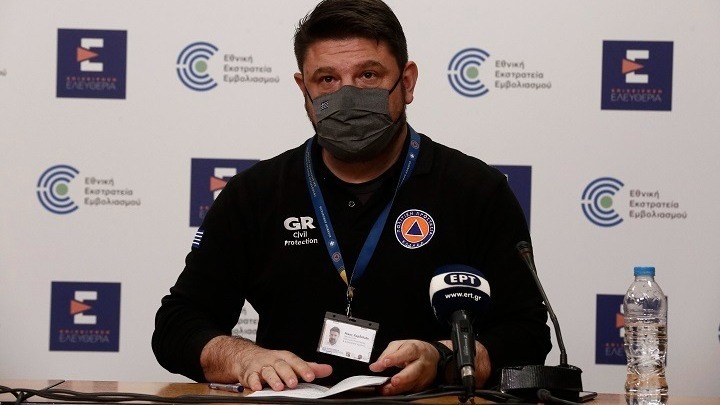Northern suburb of Thessaloniki on 'red' alert over coronavirus infections - N. African strain

The towns of Kalymnos on the eponymous island and Kordelio-Evosmos in the Thessaloniki region have been upgraded to high-alert status in terms of coronavirus infections as of Saturday (Feb. 20) to March 1, Deputy Minister for Civil Protection and Crisis Management Nikos Hardalias said on Friday during a live briefing.
Hardalias also said that there was no improvement in the following areas already 'in the red' in terms of infections: Achaia and Evia Prefectures (for the latter, Skyros island is exempt), Mykonos Town, and Attica Region. Restrictions in these areas remain in place as already known, to February 28.
Restrictions will not be extended for Thera (Santorini) proper, Agios Nikolaos (Crete), Zakynthos island, Eordea (Macedonia) and Sparta (Peloponnese), he said, as the viral load in these areas is dropping.
Most of the country is on "orange" alert, or being monitored closely, Hardalias said.
British strain
Greece's epidemiological load remains stable, with 44 being the median age of new coronavirus cases, said Professor of Pediatric Infectious Diseases Vana Papaevangelou at Friday's briefing on the pandemic.
She added that there are currently 10,500 confirmed active cases nationwide.
The infections daily average at the moment in Greece stands at 1,040 cases, a ratio of 10 cases per 100,000 inhabitants.
The British variant of the virus seems to be dispersing broadly, she noted, although most of these infections are not imported from abroad. The population's vaccination is therefore recommended, bearing in mind that the British strain will potentially prevail, as there are now 700 cases of infection from this strain, spread across 32 of the country's regions, she pointed out.
Attica Region's epidemiological profile is also following a stabilizing trend, with 5,500 active cases and the RT dispersal factor dropping to -1. The viral load, however, in the region remains high, she noted.
Evosmos: N. African strain
In Thessaloniki, active cases number 1,200, while the dispersal of the North African strain at the municipality of Evosmos is alarming, as is the continued dispersal of the virus in working spaces in the country, Papaevangelou said.
Asked on whether the nationwide lockdown will be lifted in the beginning of March on account of the stabilizing trend, she said the Health Ministry's committee of experts will discuss this in a meeting scheduled on Wednesday.
Vaccination data in March
The restrictive safety measures taken so far in Greece seem to be bringing results, said Professor of Epidemiology Gkikas Magiorkinis.
Some local infection clusters are still observed, he added, but the country's overall epidemiological profile contains many areas of stabilization. More information will be available when the first batch of vaccinations data becomes available in March, he explained.
Infections among those aged 65 or over seem to be subsiding, while citizens aged between 40-64 remain the group with highest infection rates.
Finally, Magiorkinis stressed that the coronavirus is more transmissible when one does not wear a face mask when spending an extended time indoors, and urged the continued observance of all health safety protocols by all.
Attica ICUs nearly full
Most of the intensive care unit beds dedicated to Covid-19 patients in Attica Region are currently occupied, said Alternate Health Minister Vassilis Kontozamanis on Friday, speaking at the briefing on the pandemic's course.
However, pressure on the national health system will be counterbalanced by the health authorities' plans to add 38 new ICU beds in Attica hospitals in coming days. The stabilizing trend of hospital admissions rates also helps greatly, he added.

















































































